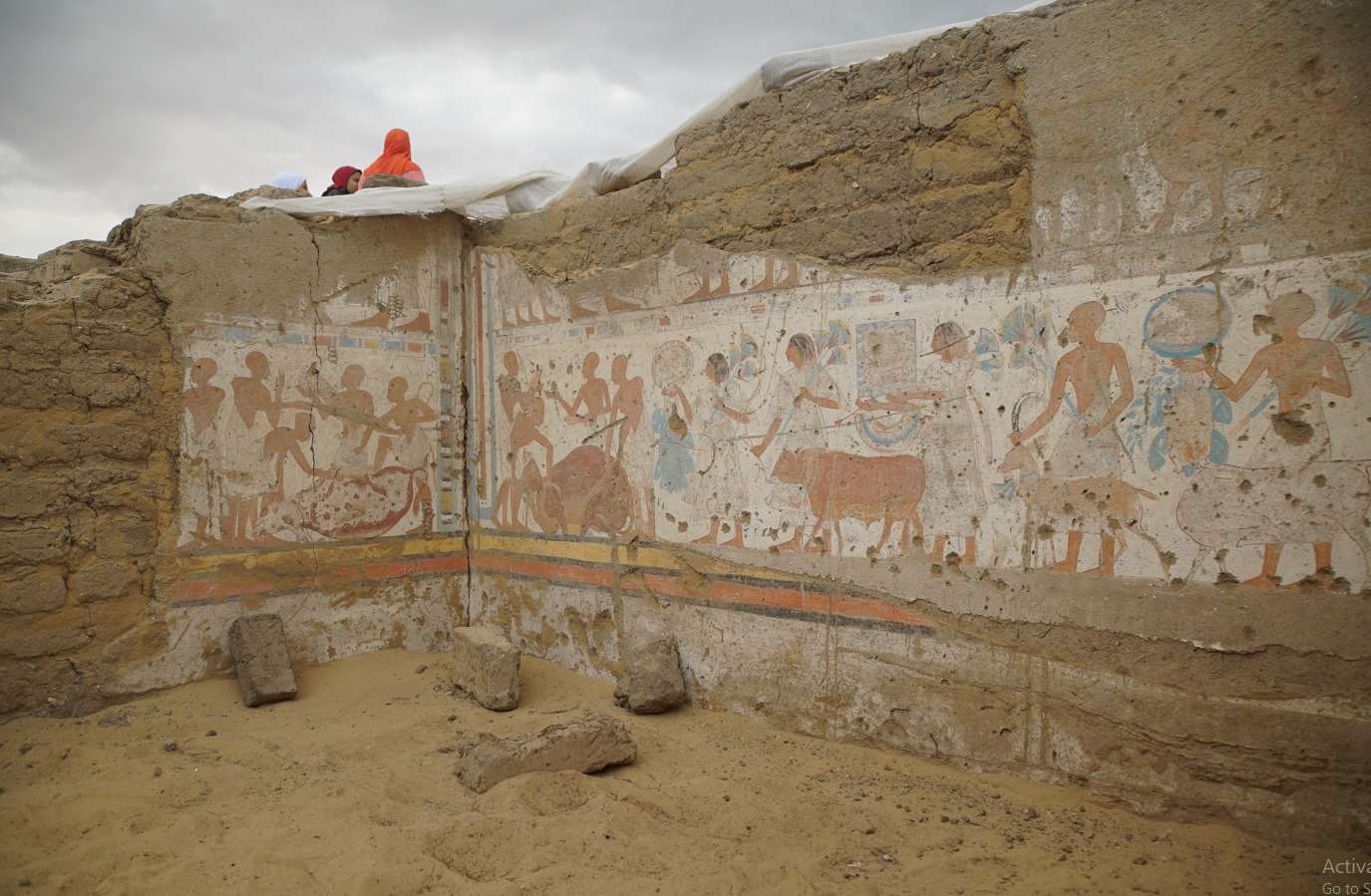The mission of the Faculty of Archeology, Cairo University, headed by Prof. Dr. Ola El-Ajezy, succeeded in excavating the tomb of “Ptah-M-Wia”, who was head of the treasury during the reign of King Ramses II, during the excavations that the mission is conducting in the Saqqara area, south of the ascending road of King Unas.
The new discovery was stated by Dr. Mustafa Waziri, Secretary-General of the Supreme Council of Antiquities, pointed out that the discovery site includes the tombs of senior men of the Modern Kingdom in Ancient Egypt from the era of the nineteenth dynasty that complements the site of the tombs of the eighteenth dynasty, the most important of which is the site of the military commander Hor Moheb.
Dr. Waziri said that the importance of discovering this tomb is due to the positions held by its owner as: royal scribe, head of the treasury, chief supervisor of livestock, and responsible for pine offerings in the temple of Ramses II in Thebes.
Prof. Dr. Mohamed Othman El-Khosht, President of Cairo University, explained that this important archaeological discovery joins the group of discoveries made by the excavation mission of Cairo University.
Missions of the university have discovered the tomb of the Mayor of Memphis Ptah-Mas, the royal ambassador to foreign countries, Basir, and the supreme commander of the army, Eurkhi, in the Saqqara region.
He stresses the extent of the university's interest in field work alongside research and scientific work, which is a priority in its interests to advance the educational process in all fields.
He went on to say that the university spares no effort to support the mission's work, expressing his happiness that this is one of the manifestations of Cairo University's cooperation with the Ministry of Tourism and Antiquities.
Prof. Dr. Ahmed Ragab, Dean of the Faculty of Archeology, Cairo University, indicated that the excavations of the faculty dates back to the seventies of the last century, when they began on the site in search of Coptic monasteries, while the actual search for the tombs of the Modern Kingdom began south of the ascending road to the pyramid of King Unas by Prof. Dr. Sayed Tawfiq in the period from 1983-1986 AD.
These efforts resulted in the discovery of many tombs dating back to the Ramesside period, including the tomb of the royal vizier Nefer-Ranpet.
Prof. Dr. Ola Al-Ajezi, head of the mission, added that the cemetery belongs to the distinctive style of this site, which is called the tomb-temple, as it consists of an entrance in the form of an edifice, followed by one or more courtyards.
What has now been discovered from the tomb is its entrance built of stone carved with the scenes of the owner of the tomb. This entrance leads to a first hall with painted and colored plaster walls. She noted that among the most important of these scenes are those depicting the procession of carrying offerings, which ends with a scene of slaughtering a calf.
Many engraved stone blocks were found under the sand, as well as many Osirian columns, some of them lying in the sand and others standing in their original place. All these pieces will be studied to be put back in their original places in the cemetery.
The head of the mission added that the mission had completed work on the tomb of the Supreme Commander of the Army during the reign of King Seti I and his son, King Ramses II.
The calf's cabin, which was discovered during the excavations of the late Professor Dr. Sayed Tawfiq, was also restored, and work is still in progress.
Translated by Ahmed Moamar















